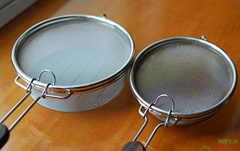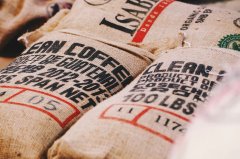Introduction to roasting beans for boutique coffee the process of roasting on hand net

A few days ago, Meng long came to Hao Fang Coffee Shop to buy coffee beans. He is an expert at roasting at home. There are more and more friends like him, and Uncle Dou is now starting to pack raw beans into small packets to share with his baked friends. There are only two varieties, but there will be more and more. It is a pleasure to discuss with friends who play baking.
Friends who play baking at home must keep an eye on the voltage if they buy a small roaster. There are many such machines in the United States, but they are all 110v. A few days ago, there was this kind of problem in Menglong's machine. I helped him find the damaged parts for a long time, but I couldn't find it. Uncle Dou felt very sorry.
Friends who bake coffee at home use hand nets, and there are also sporadic people who use pans. It is said that the mobile network is going to buy in Japan, and they are all asking me about the baking curve. With all due respect, this kind of equipment is not a baking curve in a strict sense. Because the apparatus itself does not support more elaborate curve design. Even if you share some curves with you, you understand them, but you may not be able to perceive them intuitively in the course of your operation.
But Dou Shu must declare that Dou Shu is not a friend who despises the use of hand nets and pans to bake. I have used both of these baking utensils, especially the pan, which is used by Uncle Dou to buy beans in Ethiopia (Ethiopia: magical pan coffee roasting). So where do we focus on the use of these two instruments? Uncle Dou believes that trying to bake as evenly as possible and that the beans can be baked more evenly is the key to this kind of equipment.
So instead of thinking about dehydration, taxiing time, etc., we start by avoiding Yin Yang beans and pockmarked beans. If you can be more skillful in mastering as few such problems as possible, your hand-net baking will roughly pass. The introduction to these two kinds of appliances should start with the coffee surface as evenly as possible, and there must be something wrong with the uneven heating on the outside. This is where Uncle Dou learned to bake in a pan.
Important Notice :
前街咖啡 FrontStreet Coffee has moved to new addredd:
FrontStreet Coffee Address: 315,Donghua East Road,GuangZhou
Tel:020 38364473
- Prev

Definition of roasting degree and taste of all kinds of coffee
Let's talk about the definition of various baking degrees and taste. In the United States, the degree of roasting has long been defined by Cinnamon (shallow roasting), City (shallow roasting), Fully City (deep roasting) and Dark roast (heavy deep roasting, including Italian and French). However, the American preference for coffee flavor has always been strong in the west and light in the east, so on the west coast.
- Next

Basic knowledge of boutique coffee classification of roasting degree of coffee
New England baking (New England): light brown, dried bean noodles. American baking (American): medium brown, dried bean noodles. Viennese roasting (Viennese): medium dark brown with scattered drops of coffee oil on the bean noodles. French roasting (French): moderate dark brown bean noodles with a thin layer of coffee oil. Espresso baking: dark brown, due to baking process
Related
- Beginners will see the "Coffee pull flower" guide!
- What is the difference between ice blog purified milk and ordinary milk coffee?
- Why is the Philippines the largest producer of crops in Liberia?
- For coffee extraction, should the fine powder be retained?
- How does extracted espresso fill pressed powder? How much strength does it take to press the powder?
- How to make jasmine cold extract coffee? Is the jasmine + latte good?
- Will this little toy really make the coffee taste better? How does Lily Drip affect coffee extraction?
- Will the action of slapping the filter cup also affect coffee extraction?
- What's the difference between powder-to-water ratio and powder-to-liquid ratio?
- What is the Ethiopian local species? What does it have to do with Heirloom native species?

